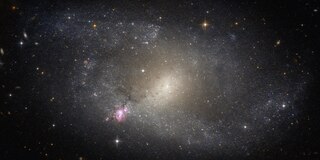
NGC 5398 is a barred spiral galaxy in the southern constellation of Centaurus. It was discovered June 3, 1836 by John Herschel. Distance estimates range from 5.39 Mpc to 18.30 Mpc. The tip of the red-giant branch method yields a distance of 11.6 Mpc, while the Tully–Fisher relation shows values of around 8.5 Mpc. It is receding with a heliocentric radial velocity of 1,219 km/s.

NGC 25 is a barred lenticular galaxy situated in the Phoenix constellation. It was discovered on 28 October 1834 by John Herschel. It is the brightest cluster galaxy for Abell cluster 2731. A supernova was discovered in NGC 25 on 15 November 2020.

NGC 51 is a lenticular galaxy in the constellation Andromeda. It has a diameter of 90,000 light-years. The galaxy was discovered on September 7, 1885 by Lewis Swift, who described it as "Pretty faint, pretty small, round, brighter middle."
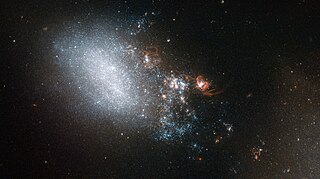
NGC 4485 is an irregular galaxy located in the northern constellation of Canes Venatici. It was discovered January 14, 1788 by William Herschel. This galaxy is located at a distance of 29 million light years and is receding with a heliocentric radial velocity of 483 km/s.

NGC 4388 is an active spiral galaxy in the equatorial constellation of Virgo. It was discovered April 17, 1784 by Wilhelm Herschel. This galaxy is located at a distance of 57 million light years and is receding with a radial velocity of 2,524 km/s. It is one of the brightest galaxies of the Virgo Cluster due to its luminous nucleus. NGC 4388 is located 1.3° to the west of the cluster center, which translates to a projected distance of ≈400 kpc.

NGC 128 is a lenticular galaxy in the constellation Pisces. It is approximately 190 million light-years from the Sun and has a diameter of about 165,000 light-years.

NGC 4762 is an edge-on lenticular galaxy in the constellation Virgo. It is at a distance of 60 million light years and is a member of the Virgo Cluster. The edge-on view of this particular galaxy, originally considered to be a barred spiral galaxy, makes it difficult to determine its true shape, but it is considered that the galaxy consists of four main components — a central bulge, a bar, a thick disc and an outer ring. The galaxy's disc is asymmetric and warped, which could be explained by NGC 4762 mergering with a smaller galaxy in the past. The remains of this former companion may then have settled within NGC 4762's disc, redistributing the gas and stars and so changing the disc's morphology.

NGC 182 is a spiral galaxy with a ring structure, located in the constellation Pisces. It was discovered on December 25, 1790 by William Herschel.
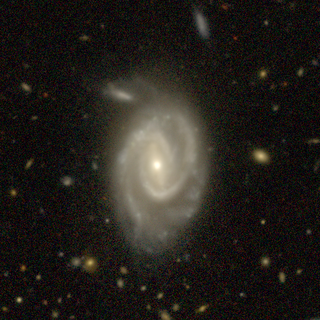
NGC 334 is a barred spiral galaxy in the constellation Sculptor. It was discovered on September 25, 1834 by John Herschel. It was described by Dreyer as "very faint, small, round, gradually a little brighter middle, 2 stars of 11th magnitude to south."
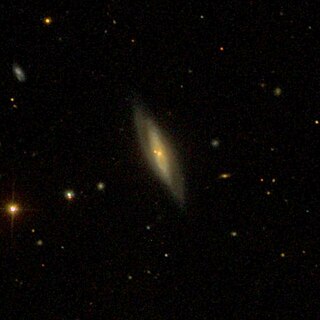
NGC 353 is a spiral galaxy in the constellation Cetus. It was discovered on November 10, 1885 by Lewis Swift. It was described by Dreyer as "extremely faint, pretty small, round, southeastern of 2.", the other being NGC 351.

NGC 363 is a lenticular galaxy in the constellation Cetus. It was discovered on November 28, 1885 by Francis Leavenworth. It was described by Dreyer as "extremely faint, extremely small, round."

NGC 364 is a barred lenticular galaxy in the constellation Cetus. It was discovered on September 2, 1864, by Albert Marth. It was described by Dreyer as "very faint, very small."

NGC 366 is an open cluster located in the constellation Cassiopeia. It was discovered on October 27, 1829 by John Herschel. It was described by Dreyer as a "cluster, small."

NGC 375 is an elliptical galaxy located in the constellation Pisces. It was discovered on September 12, 1784 by William Herschel. It was described by Dreyer as "pretty faint, small, round, brighter middle." Along with galaxies NGC 379, NGC 380, NGC 382, NGC 383, NGC 384, NGC 385, NGC 386, NGC 387 and NGC 388, NGC 375 forms a galaxy cluster called Arp 331.
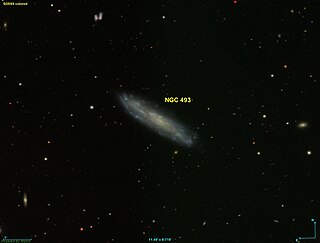
NGC 493, also occasionally referred to as PGC 4979 or GC 281, is a barred spiral galaxy in the constellation Cetus. It is located approximately 90 million light-years from Earth and was discovered on December 20, 1786 by astronomer William Herschel. It was later also observed by his son, John Herschel. John Dreyer, creator of the New General Catalogue, described the galaxy as "very faint, large, much extended 60°" with "a little brighter middle".
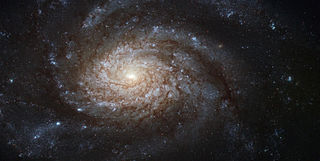
NGC 3810 is a spiral galaxy located in the constellation Leo. It is about 50 million light years from Earth, and estimated to be about 60,000 light years in diameter. William Herschel discovered it on 15 March 1784.

NGC 5468 is an intermediate spiral galaxy located in the constellation Virgo. It is located at a distance of about 140 million light-years from Earth, which, given its apparent dimensions, means that NGC 5468 is about 110,000 light-years across. It was discovered by William Herschel on March 5, 1785.
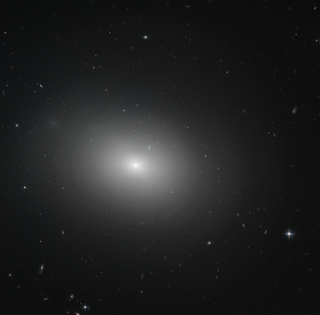
NGC 5982 is an elliptical galaxy located in the constellation Draco. It is located at a distance of circa 130 million light years from Earth, which, given its apparent dimensions, means that NGC 5982 is about 100,000 light years across. It was discovered by William Herschel on May 25, 1788.

NGC 1142 is a distorted spiral galaxy in the constellation of Cetus. It is located about 370 million light years away from Earth, which means, given its apparent dimensions, that NGC 1142 is approximately 170,000 light years across. It is a type 2 Seyfert galaxy. It interacts with the elliptical galaxy NGC 1141.
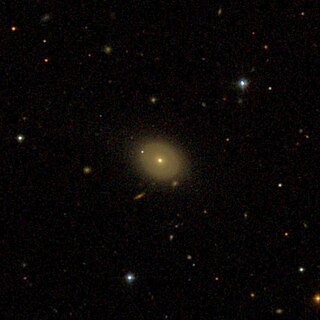
NGC 5501 is an unbarred spiral galaxy in the constellation of Virgo, registered in New General Catalogue (NGC).




















